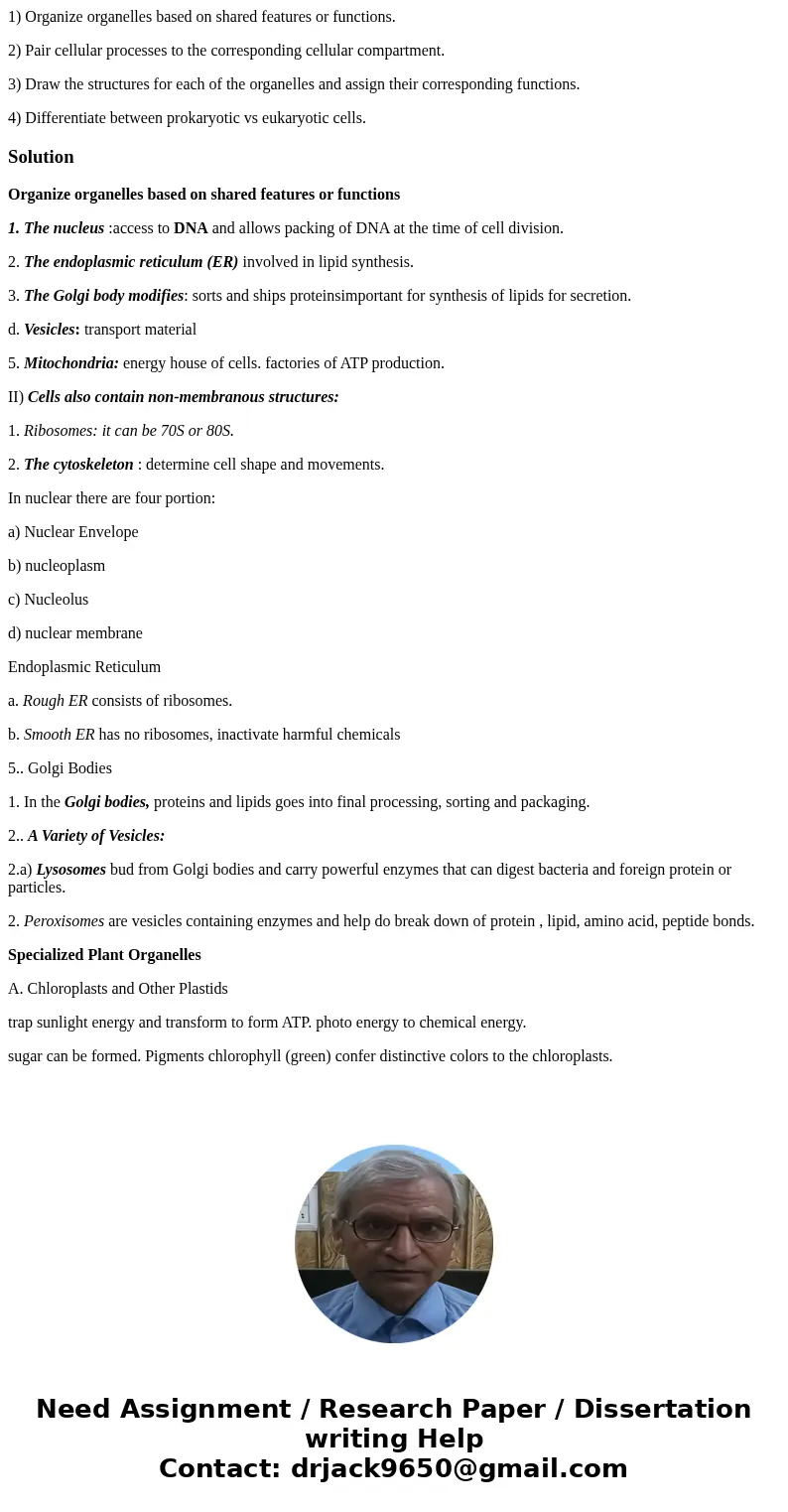1 Organize organelles based on shared features or functions
1) Organize organelles based on shared features or functions.
2) Pair cellular processes to the corresponding cellular compartment.
3) Draw the structures for each of the organelles and assign their corresponding functions.
4) Differentiate between prokaryotic vs eukaryotic cells.
Solution
Organize organelles based on shared features or functions
1. The nucleus :access to DNA and allows packing of DNA at the time of cell division.
2. The endoplasmic reticulum (ER) involved in lipid synthesis.
3. The Golgi body modifies: sorts and ships proteinsimportant for synthesis of lipids for secretion.
d. Vesicles: transport material
5. Mitochondria: energy house of cells. factories of ATP production.
II) Cells also contain non-membranous structures:
1. Ribosomes: it can be 70S or 80S.
2. The cytoskeleton : determine cell shape and movements.
In nuclear there are four portion:
a) Nuclear Envelope
b) nucleoplasm
c) Nucleolus
d) nuclear membrane
Endoplasmic Reticulum
a. Rough ER consists of ribosomes.
b. Smooth ER has no ribosomes, inactivate harmful chemicals
5.. Golgi Bodies
1. In the Golgi bodies, proteins and lipids goes into final processing, sorting and packaging.
2.. A Variety of Vesicles:
2.a) Lysosomes bud from Golgi bodies and carry powerful enzymes that can digest bacteria and foreign protein or particles.
2. Peroxisomes are vesicles containing enzymes and help do break down of protein , lipid, amino acid, peptide bonds.
Specialized Plant Organelles
A. Chloroplasts and Other Plastids
trap sunlight energy and transform to form ATP. photo energy to chemical energy.
sugar can be formed. Pigments chlorophyll (green) confer distinctive colors to the chloroplasts.

 Homework Sourse
Homework Sourse